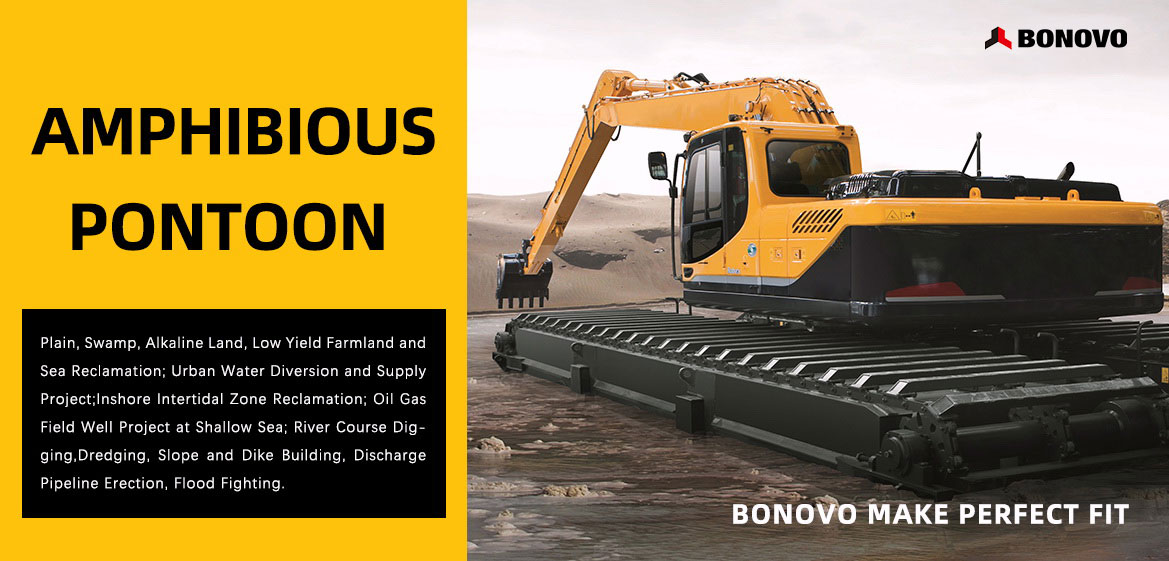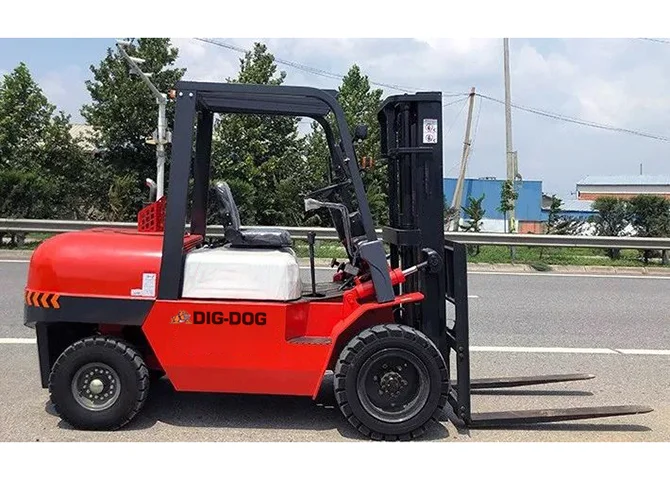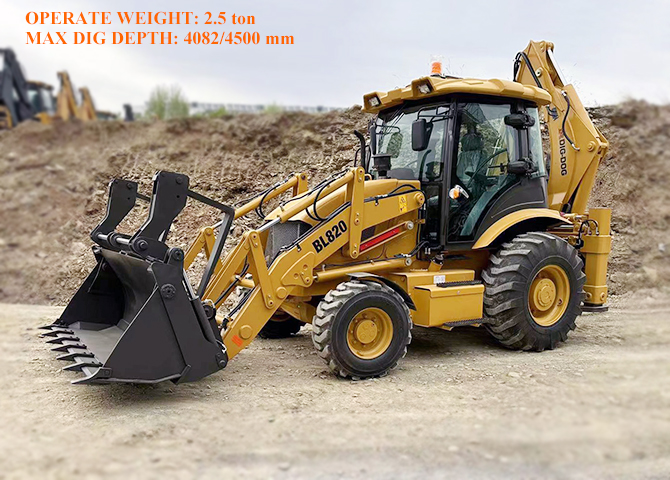Amphibious excavators are similar to standard crawler excavators in that they both have rotating wheelhouses and boom/bucket bar/bucket assemblies for digging and moving material. Amphibious excavators provide additional versatility and are also designed for use in swamps, wetlands, rivers, harbors and many other types of waterways. These excavators are also used to perform a function called dredging. Dredging involves removing and transporting sediment that normally lies at the bottom of bodies of water, such as lakes, harbors, rivers, ponds and other types of water environments.
In addition to the typical boom/bucket bar/bucket assembly, amphibious excavators include amphibious landing gear, sealed pontoons, and buoyancy tanks to enable the excavator to flow over the surface of the channel. The design also includes a main hydraulic pump with a walking motor to help propel the excavator through the water. Additional features of this excavator type enable the machine to be used in the most demanding water environments.
Although standard and amphibious excavators are very similar in some respects, amphibious excavators offer greater value because they can perform many other tasks that standard excavators cannot. Both excavator types are excellent for large excavations, crawler operations, and are available in a number of comparable sizes. Each excavator type runs on two tracks, making the weight distribution of the excavator more even, which is ideal for soft terrain; Both can be fitted with standard length boom/bucket rod assemblies or long distances for extended distances.
The difference is that amphibious excavators can operate in wet environments typical of areas where wetlands, rivers, marshes, wetlands and many other types of waterways are more common. Standard excavators can work up to three feet of water, while amphibious excavators work up to six feet of water. Deeply. Amphibious excavators are also better in ooze environments.
Amphibious excavators are also a better choice when there is a high risk of exposure to underground water, which can overcome the problem of standard excavators drowning and being unable to recover. Amphibious excavators are the best choice for any environment that involves or is likely to have water.

Amphibious excavators, also known as swamp buggies, are one of the most widely used excavators on the market. They can go beyond where most other excavators can go, and they can do most of the things other excavators can do. And more. Amphibious excavators are the only option when it comes to working in wet environments -- from water-saturated soil to other types of soil to motorized waterways up to 6 feet high. Deeply. Some amphibious excavators are advertised as being able to operate in deeper water. Amphibious excavators are commonly used for any application that requires digging and removing materials located at the bottom of marshes, ponds, rivers, harbors, and many other types of waterways.
One of the most popular applications of aqua excavators is dredging, in which emotions are removed from the bottom of a body of water that must be kept at a specific depth to allow passage of transport barges, boats and ships. Keeping proper channel depth can improve the efficiency of water transportation. Dredging may include pumps and cutters fixed to the ends of wooden sticks; This configuration allows for very precise dredging to avoid excessive damage to the bottom of the channel and the shoreline. For applications that require removal of large amounts of sediment, barges can be used to load sediment for rapid transfer to dehydration or disposal sites. Sediment, when it's removed from the bottom of the channel,

Common applications include:
In many industries, there are many jobs that may involve polluting the environment with hazardous substances. There are rules and regulations that the responsible organization must address and mitigate contamination when it occurs. If contamination occurs, the typical process is to involve environmental remediation experts, who are experts with applicable regulations and standards. Remediation specialists understand regulations and standards, as well as the process of conducting on-site assessments to determine the extent of contamination and possible steps to repair damage.
Remediation Process
The restoration process involves a first stage assessment of the situation, which includes water and soil sampling. Then, depending on the type and severity of the problem, a course of action is selected to correct the situation and return the immediate environment to its natural state. Many times, if the water body is damaged, or shoreline dredging is used to collect affected sediment and material at the bottom of the channel. The material is then moved to an area where a decontamination process is applied to remove contaminants from the material or disposed of in such a way that the material does not cause any further contamination of the environment.
Amphibious excavators were used in this dredging process, and buckets or dredging pumps attached to the end of the boom/stock assembly were used to remove contaminated material for relocation. Amphibious excavators are ideal for working in wet and watery environments. Designed with amphibious landing gear, they can maneuver in water up to six feet high. Go deep into the area you need to dig. With dredge pump attachments, they can remove contaminated and contaminated sediment and material from waterways with surgical precision. The cutter head at the end of the dredge pump, in conjunction with a GPS positioning device, ensures that only materials that must be extracted are removed to avoid further damage to the surrounding environment. If the water is also contaminated, dredge pumps are used to pump the water through a filtration process so the water can be decontaminated and returned to the body of water from which it came.
After the repair process is complete, the environment will undergo a final assessment to ensure that the damage initially caused has been repaired and restored to its original state. The environmental remediation process would be impossible without the use of amphibious excavators and appropriate dredging attachments. Amphibious excavators and dredging pumps are key components in restoring damaged marshes and wetlands, rivers, harbors and many other types of waterways to their original state.
 A Ultimate Guide to Clamp Forklifts and Attachments
A Ultimate Guide to Clamp Forklifts and Attachments
 How To Choose The Right Compact Wheel Loader
How To Choose The Right Compact Wheel Loader
 How Much Does a Forklift Weigh?
How Much Does a Forklift Weigh?
 How Much Does a Backhoe Weigh
How Much Does a Backhoe Weigh